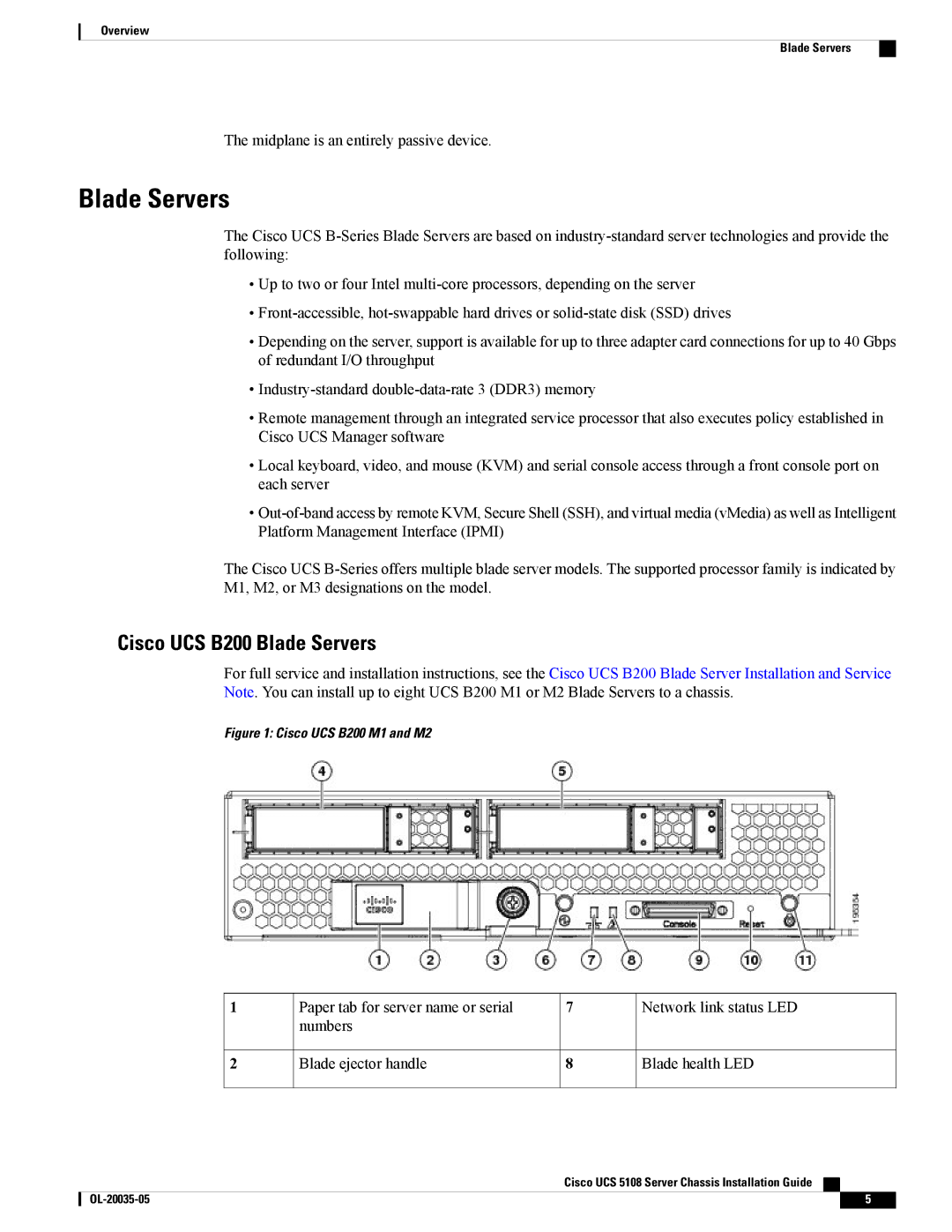
Overview
Blade Servers
The midplane is an entirely passive device.
Blade Servers
The Cisco UCS
•Up to two or four Intel
•
•Depending on the server, support is available for up to three adapter card connections for up to 40 Gbps of redundant I/O throughput
•
•Remote management through an integrated service processor that also executes policy established in Cisco UCS Manager software
•Local keyboard, video, and mouse (KVM) and serial console access through a front console port on each server
•
The Cisco UCS
Cisco UCS B200 Blade Servers
For full service and installation instructions, see the Cisco UCS B200 Blade Server Installation and Service Note. You can install up to eight UCS B200 M1 or M2 Blade Servers to a chassis.
Figure 1: Cisco UCS B200 M1 and M2
1 | Paper tab for server name or serial | 7 | Network link status LED |
| numbers |
|
|
2 | Blade ejector handle | 8 | Blade health LED |
Cisco UCS 5108 Server Chassis Installation Guide
5 |
